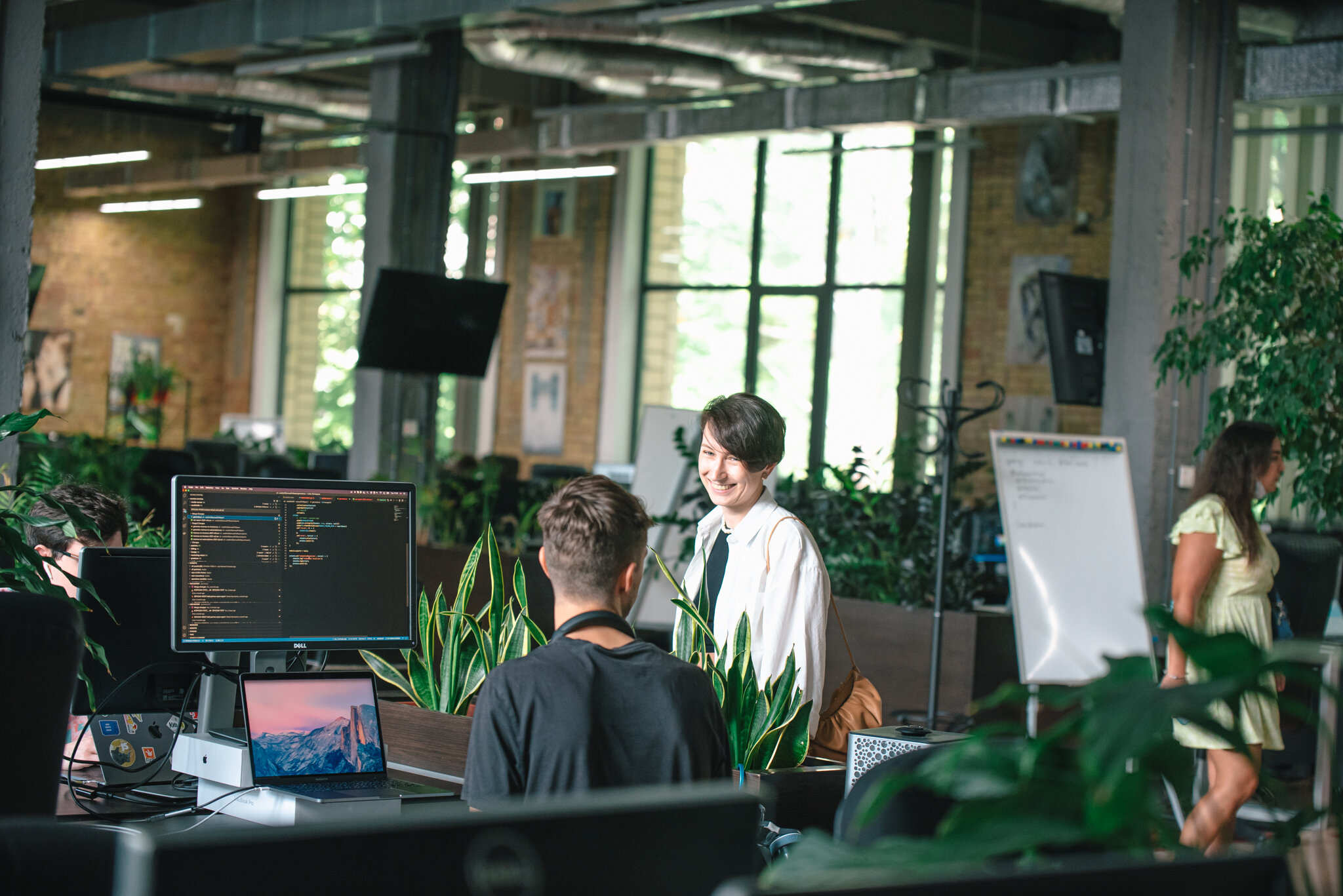Dmytro Sergeev wants his graphic design startup Crello, headquartered in Kyiv, to compete with Canva, a Sydney-based company recently valued at $40 billion.
Crello and Canva serve as online platforms with free templates, where everyone, from students to teachers, bloggers, entrepreneurs or employees, can quickly turn their content into visually attractive wrappers.
Customers can create anything from juicy Instagram posts and logos to scientific presentations in just a few clicks.
Sergeev, 40, sees how Crello, which according to his estimates is now worth about $200 million, can beat Canva.
“We will try to do this with better tools, like animated graphics for instance,” he told the Kyiv Post.
Growing quickly
Launched in 2016, Crello is part of Depositphotos, a licensed bank of stock photos, graphics, videos, and music, operating in 192 countries. This gives Crello access to a massive library of over 200 million files.
Vadim Nekhai, the CEO of Depositphotos, brought up the idea of creating Crello after attending a tech forum in the U.S., where he saw the presentation of then little-known Melanie Perkins, the founder of Canva.
As of 2021, Canva has over 60 million active users and 34-year-old Perkins is the 9th richest person in Australia, according to Bloomberg.
“Everybody was ignoring her back then, but now it’s a success story,” Sergeev said. “It resonated in our project,” he adds, but “we had so many photos to use that we decided that we could do even better with them.”
The Ukrainian startup is growing quickly. Over the past five years, it has reached 7 million users and created over 70,000 ready-made templates. Every month Crello adds 300,000 new users.
The startup makes money on monthly subscriptions, which offer unlimited design downloads and several other premium options, in contrast to the basic plan.
Crello mainly earns money from selling its products to the U.S. and western European countries, but most of its users live in post-Soviet countries where they mainly use the program for free.
According to Sergeev, 20% of U.S. traffic generates 80% of the money, while the post-Soviet region only makes one-tenth.
“These countries bring us super small revenues,” he said. “People are not used to paying for the design, for downloading when they can just take screenshots.”
To grow even faster, Sergeev plans to enlarge his team from 120 to 400 employees. Most of them work in the Ukrainian capital.
“Kyiv is a beautiful place. I believe in this city,” said Sergeev, a Russian native who “lost Russian self-identification” as he came to Ukraine two decades ago and lived through two revolutions.
Besides Kyiv, Crello’s team is also based in Cyprus, Spain, Italy and the U.S.
Currently, the company has 50 vacancies open. But Sergeev complains about a lack of specialists, as the IT market is overheating in Ukraine, making it harder to attract specialists.
“It is challenging for us to find talented people both in design and in programming,” he said.

A photographer shoots at Depositphotos in Kyiv on Sept. 24, 2021. (Kostyantyn Chernichkin)
Looking for investors
Depositphotos has its headquarters in New York, like many other companies from Ukraine.
The reason is simple, Sergeev said. He doesn’t trust the Ukrainian judiciary system, and his company has access to more opportunities in the U.S.
“No one will take anything from you, no one will start any illegal criminal case, and this gives some peace of mind,” Sergeev said.
Plus, it is easier to work with international institutions and attract investors as the company is part of a reliable network such as the Bank of America and Silicon Valley Bank.
If Crello wants to compete with Canva, it needs big investors. Right now, its parent company, Depositphotos, only has enough to give it $10 million per year. Meanwhile, Canva has received $1 billion in investments in eight years.
“It’s hard to compete with $10 million with those who operate with a billion,” he said. “Perhaps a major investor will come, one who will believe in our story, and we will keep fighting.”





